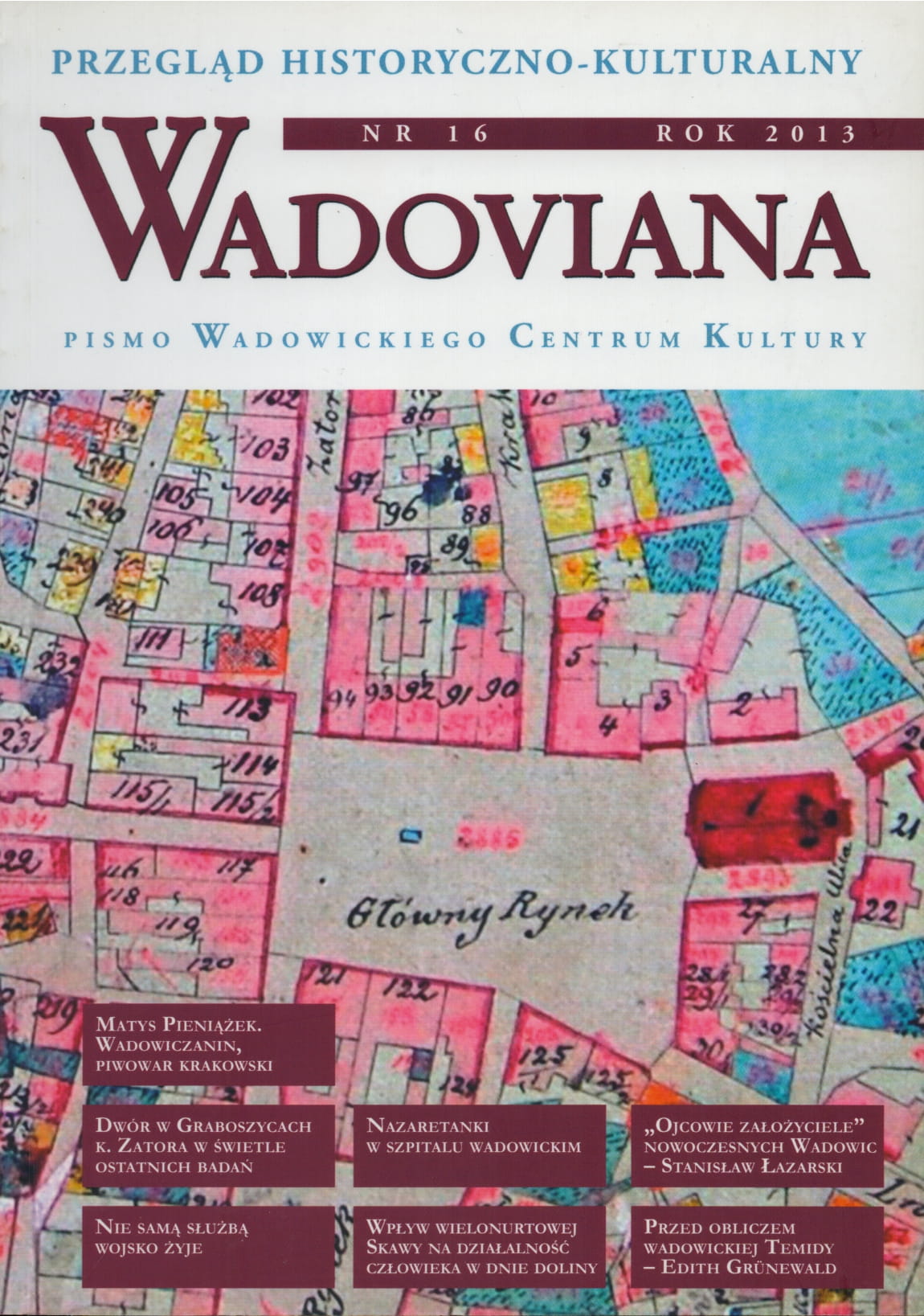Wpływ wielonurtowej Skawy na działalność człowieka w dnie doliny
The influence of the Multi-current Skawa river on human activity in the bottom of the valley.
Author(s): Karol Witkowski, Grzegorz WysmołekSubject(s): History, Geography, Regional studies
Published by: Wadowickie Centrum Kultury
Keywords: Skawa river;Choczenka rivers;fishing;milling;floods;
Summary/Abstract: The review of literarure, archives and the cartographic material allow us to drawan outline of the Skawa River valley over the centuries. The valley floor bottom shapewas a significant factor responsible for the origin and the development of settlements.The location of Wadowice, between the Skawa and Choczenka Rivers, increased thedefensive capabilities of the settlements and provided easy access to water. Since the 13th century, the residents of Wadowice and the surrounding area usedthe Skawa River for economic purposes. The municipal charter of Wadowice gavethe inhabitants the right to use ichthyofauna. The ox-bow lakes enabled people toestablish breeding ponds. The development of the milling industry, which pieaked inthe 19th century, was due to millrace powered by the Skawa riverwater. Timber raftingwas not only one of the forms of local serfdom, but also a profitable occupation.The timber was transported to Maków Podhalański then onto the Wisła and so on.There were also fields of wicker which residents used to make household appliances.The human activity by the Skawa river was dependant on its hydrological mode.This location had a lot of advantages, however there was also a risk of flooding. Since15th century, river floodings have destroyed buildings and caused losses in crops resulting in boundary changes. Floodings have also caused human deaths. The floodingin the valley made communication difficult because of damaged bridges and roads.At the end of the 19th century, the government of Vienna decided to tame theCarpathian Rivers. The first river regulations were made in the 19th century, but theydidn`t survive long. In order to reduce flood losses along the banks, river edges weresystematically strengthened. In the beginning of the 20th century, river unblockingbegan. These actions put the end to the life of this natural multi current and changedit into a channelized watercourse.
Journal: Wadoviana. Przegląd historyczno-kulturalny
- Issue Year: 2013
- Issue No: 16
- Page Range: 115-138
- Page Count: 24
- Language: English, Polish
- Content File-PDF

